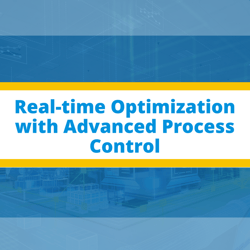 Process control is designed to keep variables within specific boundaries so optimum productivity can be achieved. The primary purpose of process control is to ensure that a process runs at the desired operating conditions, whilst meeting its constraints such as those of safety, environment, and reliability. Process control strategies can be organized into a hierarchy, allowing operators to differentiate vital features from the optional ones.
Process control is designed to keep variables within specific boundaries so optimum productivity can be achieved. The primary purpose of process control is to ensure that a process runs at the desired operating conditions, whilst meeting its constraints such as those of safety, environment, and reliability. Process control strategies can be organized into a hierarchy, allowing operators to differentiate vital features from the optional ones.
The following hierarchy shows the required functions ranked higher, while the optional ones ranked lower:
|
Activity |
Time Frame |
|
|
6 |
Planning and scheduling |
Days to months |
|
5 |
Real-time optimization |
Hours to days |
|
4 |
Multi-variable and constraint control |
Minutes to hours |
|
3 |
Regulatory control |
Seconds to minutes |
|
2 |
Safety and environment protection |
Less than 1 second |
|
1 |
Measurement and actuation |
Less than 1 second |
The Hierarchy
Measurement and actuation are highly prioritized parts of any industrial control system. The measurement device senses process variables while the actuation equipment generates a response proportionate to the error. Through this combination, process control ensures productivity, safety, and protection of personnel, equipment, and environment.
Next, regulatory control methods make sure that the control variables are kept close to the setpoint while multi-variable and constraint control ensure that the process remains as stable as possible. However, in order to ensure that the controller always keeps the process close to the setpoint while taking into account the operating conditions, the next function of real-time optimization must be employed. The highest level, planning and scheduling, is something that’s carried over a longer period of time and caters to the entire plant instead of a single process.
Advanced Process Control, often referred to as APC, is an umbrella term that includes several techniques for process control, such as statistical control and fuzzy logic. At the end of the day, the main objective is to reduce process variability and run all tasks closer to plan constraints, ultimately resulting in higher efficiency.
Of the several Advanced Process Control Techniques, Model Predictive Control (MPC) is highly important. MPC is a multivariable approach that manages constraints, actuations, and process outputs. It brings coherence and structure within processes, with the prime purpose of reducing operating overhead. MPC uses an internal dynamic model of the process, an optimization cost function, a history of past control moves to determine the optimum control required.
The optimization cost function over a receding prediction horizon is defined by the following algorithm:
- The current and future constraints have to be taken into account, and an optimal control problem has to be solved over a fixed time interval: [ιi, i + N-1]
- The first step in the resulting optimal control sequence should be applied.
- At time i + 1, the state reached must be measured
- Also at time i + 1, the fixed horizon optimization approach must be repeated, starting from the current state xi+1 over a fixed interval [ i+ 1, i + N].
During plant operations, due to changes in real-time factors such as equipment availability, and process disturbances, the optimum conditions change, and need to be re-calculated. This activity is the Real-Time Optimization (RTO) from the above hierarchy.
RTO
RTO tries to predict properties, such as a product’s characteristics, by utilizing the plant operating conditions. This is done by first selecting a process, and then formulating a suitable problem statement. Optimization of setpoints involves a total of two models: Economic and Operating.
The economic model is made up of an objective function that needs to be minimized or maximized, while the operating model is a steady-state process model, containing all variable constraints.
The steps that lead to solving an RTO problem include:
- Identifying the process variables
- Selecting the objective function
- Developing the process model and constraints
- Simplifying the objective function and process model
- Computing the optimal solution
- Performing sensitivity studies
An advanced control strategy project can be executed within four stages, namely:
1. Estimation of Benefits
The decision to implement such a strategy shouldn’t be without prior cost-benefit analysis. This step is vital to ensure that the plant’s financials would be able to sustain the strategy.
2. Implementation of Algorithms and Process Modelling
The configuration of the real-time database and controller is a must before execution of the advanced control algorithms. All the processes must be thoroughly tested, and each one must have redundant communication links to prevent failover.
3. Commissioning
This process must only be initiated once the control system has been interfaced and merged within the existing infrastructure. The communication platform must be tested, after which the multivariable controller module should be run in open-loop mode. Next, each control loop should be tuned, and the controller actions tested and verified.
4. Maintenance
This phase is required to ensure optimum performance of the advanced controls. To do so, advanced algorithms’ performance must be compared on a daily basis, and if any discrepancies arise, the controller must be re-tuned accordingly.
Interested in learning more? Speak to one of our experts!



